Study of the Month: January 2019
As I don't understand Czech, once more John Beasley, who is very knowledgeable about chess composition, especially endgame studies, translated an article from “Malá encyklopedie šachu” for this article. Many thanks again for the great help to him!
Oldřich Duras (pictured below) lived from October 30th, 1882, to January 5th, 1957, as a strong chess player and composer. In 1950 he became the first Czech master to receive the (newfound) player title of International Grandmaster by the FIDE. His career as one of the leading Czech players — of course with Richard Réti — had started prior to the first World War.
Duras was, so the encyclopedia, a “noted worker in the field of physical education and sport”, which might be a title similar to the Master of Sports in the Soviet Union.
Early career
Together with Akiba Rubinstein, Duras shared the first place at the international tourney in Barmen 1905. According the 1954 monograph by Josef Louma, Jiří Podgorný and Emil Richter: Oldřich Duras, velký mistr šachové kombinace: Životní dílo, Duras and Rubinstein played tie-breaks, with two draws, but then Rubinstein had to leave, leading the organizers to split the prize money and awarding both players the title. Vienna 1908 saw Duras again at a shared first place, with Maróczy and Schlechter and ahead of Rubinstein and others. In the same year, Schlechter and Duras shared another first place in Prague 1908.
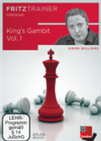 This DVD concentrates on the King's Gambit accepted with 3.Bc4. Williams has included a lot of novelties and interesting attacking variations that should wet the lips of any attacking player, looking for an interesting way of meeting 1...e5!
This DVD concentrates on the King's Gambit accepted with 3.Bc4. Williams has included a lot of novelties and interesting attacking variations that should wet the lips of any attacking player, looking for an interesting way of meeting 1...e5!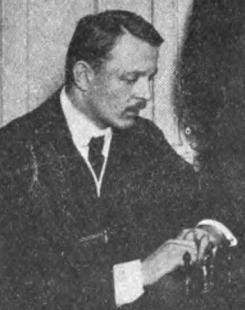
Rubinstein and Duras shared first again in Vratislav (Breslau) at the German Chess Federation Congress 1912, making them both German Champions of that year. The congress was held every two years, but because of World War I the following German Chess Federation Congress in 1914 was aborted with Alekhine leading, making Duras and Rubinstein the last German Champions before war broke out. After the war, starting at the 1920 Berlin congress, almost only Germans were allowed to play as the focus shifted towards a national championship.
Other early 20th century tourneys saw Duras at the second place: Nuremberg 1906 behind Marshall, Vienna 1906 behind Mieses (but Duras defeated Mieses in their game), Georg Marco’s Kings Gambit Accepted tourney in Opatija 1912 behind Spielmann. With the 120 games played in this Austria-Hungarian town, now called Opatija (Abbazia) in Croatia, +40 -59 =21 for White with all games beginning 1.e4 e5 2.f4 exf4, i.e. free play afterwards. It likely led to a decline of the opening among masters. Many of the tourney’s games are completely lost, only about two-thirds are available in databases, in full or in fragments.
Among the last tourneys before the war with Duras’ participation were in 1913 Lodz, Warsaw, St. Petersburg and Moscow, in 1914 New York City (he took second behind Capablanca).
Turn to composing
The war stopped his participation in international tourneys, and even when it was over he did not return to playing, leading Duras to pursue the creation of chess compositions instead, but also writing for Ceské Slovo from 1922 to 1931.

Being a Czech composer, he followed the Bohemian style in his three-movers (mates in three moves) which make almost all of his around 50 orthodox problems. A selection from his 40 endgame studies can be replayed below.
The compositions for his 17.5 points in FIDE albums would be enough for the FIDE Master for Chess Composition title in theory, but that title was founded in 1990 and not yet retroactively awarded to him. According to the “Malá encyklopedie šachu”, he received two prizes and eight other distinctions, but this is wrong. Possibly the number includes only his orthodox problems, as five prizes (one of them a special prize) and one honourable mention were awarded for his endgame studies, according to Harold van der Heijden’s mostly comprehensive database (as of October 2015).
In addition to Duras’ German Championship of 1912, according to Wikipedia which refers to the chronicle 100 let organizovaného šachu v českých zemích by Břetislav Modr and Jiří Veselý 2005, Duras won the Championship of Bohemia in Prague 1905, Prague 1909 and Plzeň (Pilsen) 1911.
Notable longer games from his playing career might be, according to the “Mala...”, his games in Carlsbad 1907 against Wolf (168 moves) and Spielmann (101 moves) as well as Janovsky in San Sebastian 1911 (167 moves). Other notable games were against Suchting in Carlsbad 1907, Spielmann in Vienna 1908, Forgacz at St. Petersburg 1909 and Alekhine in Hamburg 1910. Duras’ original ideas in practical play included the Ruy Lopez line 1.e4 e5 2.Nf3 Nc6 3.Bb5 a6 4.Ba4 Nf6 5.d3 d6 6.c4.
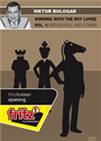 Among the open games the only opening with which White can really fight for an advantage in the long term is the Ruy Lopez. But in order to make this serious effort, he has buckle down and learn a whole series of sub-variations. That is what the professionals do, including of course Viktor Bologan, who now reveals the secrets of his own grandmaster repertoire.
Among the open games the only opening with which White can really fight for an advantage in the long term is the Ruy Lopez. But in order to make this serious effort, he has buckle down and learn a whole series of sub-variations. That is what the professionals do, including of course Viktor Bologan, who now reveals the secrets of his own grandmaster repertoire.
According to Wikipedia, an exhibition match with Ossip Bernstein in Prague 1938 saw three games with the “Duras gambit”, also known as “Fred Defense”, 1.e4 f5 2.exf5 Nf6 which is regarded as not fully sound today. However, "Mala..." tells us that it actually was a couple of spontaneous quick friendly games between the old friends Bernstein and Duras with that opening on January 27, 1938.
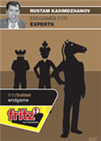 If you want to play successful chess you must pay great attention to the endgame. On this DVD, Rustam Kasimdzhanov analyses the type of practical endgames which tournament players encounter on a daily basis. He explains what has to be known in order to make the correct strategic decisions and to find the correct plan in such endings. Kasimdzhanov’s outstanding and easily understandable explanations will certainly help you to substantially improve your own performance in the endgame.
If you want to play successful chess you must pay great attention to the endgame. On this DVD, Rustam Kasimdzhanov analyses the type of practical endgames which tournament players encounter on a daily basis. He explains what has to be known in order to make the correct strategic decisions and to find the correct plan in such endings. Kasimdzhanov’s outstanding and easily understandable explanations will certainly help you to substantially improve your own performance in the endgame.As an interesting fact, this match would not have happened if Bernstein’s life was not literally saved by chess two decades prior. When he, a financial lawyer in Odessa, was caught by the Cheka (Soviet secret police) in 1918 for supporting capitalism, the firing squad officer, a chess lover, recognized his name and demanded to play chess against him as a proof that he was indeed the chess master. Bernstein won and was set free, taking the opportunity to flee to Paris. There are many interesting stories like this in chess history.
Although the number of studies of Duras is rather low, relatively many of them are known to players, as they contribute to endgame theory. A great part of the other studies contains unusual stalemate ideas with forced play and sometimes a lot of material, so a rather gamelike stalemate is shown below, as well as one logical problem-like study, and three other works that convey valuable knowledge (another stalemate study among them). The game fragment shows the possible practical use.
I did not include the studies in the Schwalbe Problem Database, which also contains over 20 problems of Duras (some sadly without solutions), but readers interested in endgame ideas for practical play might look at the endgame studies under the numbers P1211349, P1285652, P1310647 and P1319632 which were also reprinted in books about endgame theory. The replay function there is found below the notation. The German word “Gewinn” means “Win”, “Remis” asks for a “Draw”.
In the end, it should be noted there are two books on Duras, which both are available from antiquarian sources: The abovementioned 1954 monograph, as well as ten years earlier Prokop’s Duras vítězí : Šachové dílo českého velmistra Oldřicha Durasa s jeho slavnými turnajovými partiemi a šachovými problémy. Both are only available in Czech language, as such books with — at the time — a rather small audience are rarely translated.
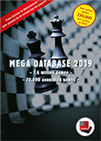 The "Mega" is the database every serious chessplayer needs. The database contains 7.6 million games from 1500 to 2018, in highest quality standard, full of top level analyses and completely classified.
The "Mega" is the database every serious chessplayer needs. The database contains 7.6 million games from 1500 to 2018, in highest quality standard, full of top level analyses and completely classified.You probably know that you can move pieces on our replay boards to analyse and even start an engine to help you. You can maximize the replayer, auto-play, flip the board and even change the piece style in the bar below the board.
At the bottom of the notation window on the right there are buttons for editing (delete, promote, cut lines, unannotate, undo, redo) save, play out the position against Fritz and even embed the ChessBase game viewer on your website or blog. Hovering the mouse over any button will show you its function.

World Federation for Chess Composition (www.wfcc.ch)
Links

























